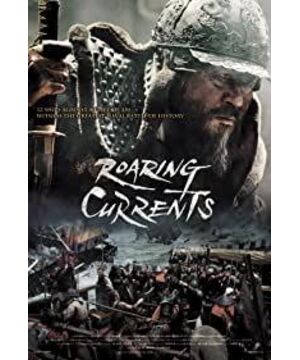When it comes to phenomenal films in the history of Korean film, 2014's "Ming Liang Sea Battle" must be one of the undisputed entrants. Whether it is 1.25 million viewers in a single day, or the final breakthrough of 17 million, surpassing "Avatar" and becoming the most watched movie in Korean film history at that time, these records are unprecedented, making all Hollywood blockbusters and domestic masterpieces. Out of sight.
Why did "Ming Liang Sea Battle" become a blockbuster and become a benchmark in Korean film history? It should be said that this is not a chance encounter, but an inevitable product of the development of Korean films. After passing through the bottleneck period around 2006 and 2007, the Korean film industry has figured out the way forward, and after the film revitalization action at the end of the last century, the layers of the layout in terms of policy, capital, talent, technology, market, etc. , and finally built a complete ecosystem around the second decade of the twentieth century and entered a golden age. The birth of "Ming Liang Sea Battle" is based on this foundation.
In addition, since "Arirang" in 1926 established the close connection between Korean films and the national spirit, any film that can be called "phenomenal", such as "Common Security Area", "Taichi Flag Flying", "Silmi Island" , "Haeundae" and other works can arouse viewers' great resonance in the national spirit. For Koreans whose national self-esteem and pride are so strong, it seems that only such a movie can be regarded as a typical Korean blockbuster. In addition, compared with the crime genre films that South Korea is also good at, war genre films play a much greater role in promoting the film industry in terms of production volume, and can also tap into profound political implications. From these two perspectives, "Ming Liang Sea Battle" is exactly at the same time, so its popularity is reasonable.
Of course, the effectiveness of marketing can not be ignored. The total cost of "Ming Liang Sea Battle" is about 19 billion won, of which 4 billion is spent on publicity, a ratio comparable to that of a Hollywood blockbuster. More importantly, with Park Geun-hye, the then President of South Korea, leading a group of political and financial bigwigs to watch the film collectively, this led to an almost one-sided trend of public opinion in the media, and ordinary people naturally flocked to it.
Although the film has broken records in South Korea, it is not well received in China. The main reason is that it highlights the heroism of Yi Sun-sin and the North Korean army. In those days, the army of the Ming Dynasty dispatched troops to join forces with North Korea to fight against the Japanese. However, the de-sinicization in the film is very obvious, completely ignoring the influence of the Ming Dynasty on the entire Wanli Korean War. Considering that the Koreans have always had a grudge against being a vassal of China, this move can also be regarded as a market behavior.
However, for historical genre films, it is not an iron rule whether it conforms to historical facts. It is the kingly way to shoot well or not. In this regard, the quality of "Ming Liang Sea Battle" is still excellent. Director Kim Hanmin is not as famous as Park Chan-wook, Kim Ki-duk, Bong Joon-ho and other famous Korean directors, but his directing ability is not inferior, especially in "The Last Weapon: Bow" in the grand historical background and complex action scenes, he showed a strong performance ability to control. It was because of Kim Hanmin's experience in dealing with costume war movies that CJ Entertainment dared to hand over the guide tube to him with confidence. In addition to the director, the cast is also quite reliable. Whether it's Choi Min-sik who plays "Yi Sun-shin", Ryu Seung-ryong who plays "Mr. Kojima Tong", or Zhao Zhenxiong and Jin Jiu who play supporting roles, all of them have worked hard for many years, ensuring first-class performance in terms of acting skills.
The highlight of the film is the hour-long naval battle, in the words of the Los Angeles Times: "The naval battle in the film is absolutely epic, more realistic and exciting than John Woo's "Red Cliff", even surpassing Peter W. Will's "Fighting in the Furious Sea"." On the one hand, the crew built a one-to-one real ship model and the largest underwater studio in Asia. On the other hand, they invited the top Korean special effects companies Macrograph and Madman Post for post-CG processing. It escorts the shocking and spectacular naval battles on both hardware and software.
As a Chinese audience, if you can ignore a little emotional discomfort, "Ming Liang Sea Battle" is still worth watching. The structure of the story is compact and the theme is clear; the design of costumes, props, weapons and warships is precise and elegant; especially the naval battle part reflects the peak level of South Korea's current special effects production. On the surface, the upsurge of the film in South Korea is due to the patriotism and heroic feelings of this main theme film that consolation to the Korean people. But at a deeper level, what is contained in the "Ming Liang Phenomenon", ranging from production standards to publicity strategies, belongs to the category of the film industry, and is an example that we really need to refer to and learn from.
♑
View more about The Admiral: Roaring Currents reviews











